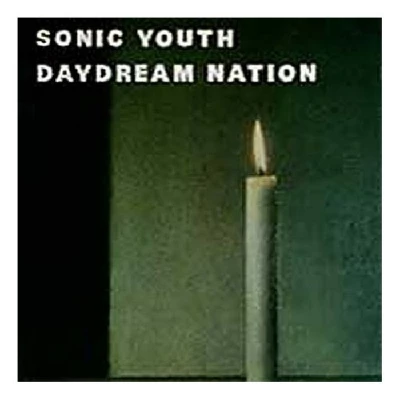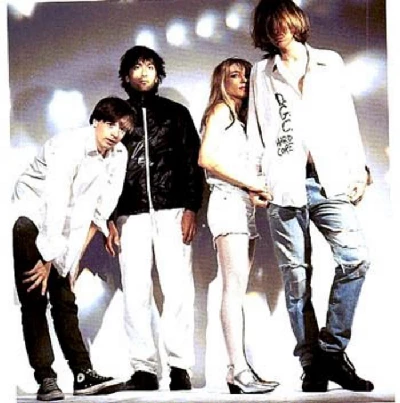published: 18 /
5 /
2007

In the latest instalment in our 'Soundtrack of Our Lives', in which our writers write about the effect of music at important times in their lives, Dominic Simpson tells of his teenage discovery of Sonic Youth
Article
It’s difficult to remember the exact year – was it 1992? Probably, but it could have been ’91 even. I was in school in Dalston, east London, aged 14 or so, and interested in seeking out the new, different kind of music that had inspired me so much via John Peel’s slot on Radio 1. The idea that no-one else would be into this kind of music in school was exciting – the closest anyone had got was the indie-looking girl with the Auteurs’ first EP. Epiphanies had already occurred: first Talk Talk’s 'Laughing Stock', then Spiritualized’s 'Lazer Guided Melodies'. Not to mention New Order’s 'Substance' retrospective, Joy Division’s 'Unknown Pleasures', Primal Scream’s 'Screamadelica', and 'Nevermind'. And My Bloody Valentine’s 'Loveless' of course, an astounding work to this day which made me realise that a different genre completely of guitar music existed other than Guns ‘n’ Roses or Joe Satriani, whom my school mates worshipped.
Then there was Sonic Youth, who I’d read about and got into via my sister’s beat-up tape of 'Dirty'. But it was a trip to HMV in Oxford Street that really did it; for it was there that I perused the racks and found the tape (yes, in those days, we still used tapes) of 'Daydream Nation', their late-80’s masterpiece. Its minimal cover didn’t bring to mind the blissed-out pop of 'Dirty' or the punk-smeared collage cover of 'Sister', nor their atonal, challenging early work such as the Sonic Death live compilation, which is why it was all the more intriguing. Just as with Joy Division’s 'Unknown Pleasures', it remains an austere and mysterious front cover, which made me want to listen to the contents even more.
The band's almost constant use of different alternative guitar tunings means that 'Daydream…' takes on an instantly recognizable hue all of it’s own, with it’s own language cut from the different tones emanating from the songs. It still sounds like something beamed from another, self-enclosed universe.
The wide-open resonances of sound and possibilities freed-up by the use of alternative tunings mean that the guitar riffs were almost like lyrics in themselves in the oceanic wash of noises. Of course, I still can’t understand what the actual real lyrics of the album are on about to this day, but I guess that adds to the mystique of the album. Odes to pagan gods (‘Rain King’) and trashy pop culture (‘Total Trash’) feature, as well as an ironic comment on the ‘slacker’ generation (‘Teenage Riot’), but elsewhere the words are often an enigma, and barely discernable at that.
Nonetheless, it’s an incredibly evocative album, and even now - whenever I hear the opening bars of ‘Teenage Riot’ all the way to the end of ‘Trilogy’ in this long, dense work - it always reminds me of that period when I would excitedly go to either HMV or Rough Trade after school or on a Saturday and peruse American indie-rock. The likes of Slint, Codeine, Come, Pavement and the Palace Brothers seemed incredibly exotic to this 14 year-old, particularly as these were the days where you had to rely on the music press or John Peel. This music slipped under the cultural radar more then than now, when the Observer supplement has articles on Bonnie ‘Prince’ Billy. There was no Internet. No Myspace. No Last FM. No allmusic.com to guide you through endless related bands.
'Daydream Nation' always remind me of this period, and of the hot long summers of ’92 and ’93, when I was incredibly excited about this whole new strata of music that everyone else at school was completely oblivious to. I would tape as much of John Peel’s show as I could – you couldn’t stream any radio show in those days, of course – and play it back, wondering about this exotic music that came from Louisiana or Seattle or New Zealand or Canada or the Czech Republic. Nor did I mind Peel’s eclecticism, which somehow made complete sense – he was the only DJ who could play an obscure American indie record next to an African pop song from Senegal, and somehow make it seamless.
In a recent interview, Kim Gordon seemed unconvinced by the idea of performing the album from start to end, which the band will do in August 2007 at the recently re-opened Roundhouse in London as part of All Tomorrow’s Parties’ ‘Don’t Look Back’ season, in which bands perform a key album of theirs in it’s entirety and in chronological order. That’s understandable: Sonic Youth always had a punk ethic, which brought with it an inherently anti-nostalgia bent (ironically, there is much ’30 years of punk’ retrospectives going around at the moment, something that the original movers of the scene would have hated). Furthermore, the band is still an ongoing concern, with new material released regularly. Nonetheless, I’ll still be going, for whenever I hear the album, it transplants me back to that early 90’s period when this kind of music seemed to be limitlessly exciting and full of endless potential.
Picture Gallery:-

